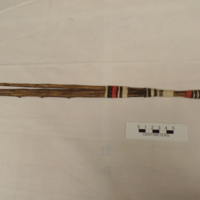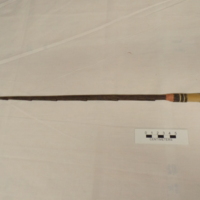Kaxinawá/Kensinger Collection
Description
The Kaxinawá, a people classified linguistically as Panoan, are predominately located along the Curanja River of southeastern Peru and along the upper parts of the Embira, Muru, Taraúaca, Jordão, Jurua, and Breu Rivers of the state of Amazonas and the Territory of Acre in Brazil.
According to Kenneth Kensinger, the Kaxinawá people predominately subsist on both hunting and horticulture (sweet manioc corn, maize, plantains, bananas, peanuts, watermelon, chili peppers, squash, etc.) though fishing and gathering are additional subsistence means and provide the tribe with a varied diet. Although widely dispersed amongst a number of villages, the Kaxinawá people consider themselves a single group tied together by a common tongue- Hacha Kuin ("the Real words"), by a common ethnic identity- Huni Kuin ("the Real men"), by patrimonial moieties, and by the extension of kinship terminology to include all members of the tribe.
In 1955 both as a linguistic fieldworker for the Instituto Linguistico de Verano del Perú and a Christian missionary, Kenneth Kensinger sought to both learn and analyze the Kaxinawá language, prepare literacy materials, and introduce biblical texts.
Kensinger's time with the Kaxinawá people eventually convinced him to cast aside his missionary objectives in favor of imersing himself in their culture. Kensinger himself wrote, "I no longer concerned myself with saving Cashinaha souls or my own." He describes the nature of his studies in the area as "not driven by a desire to test any particular theory or prove any hypothesis." Instead Kensinger lived alongside the Kaxinawá, learned their language, subsistence techniques, societal structure and norms, trades, and overall way of seeing the world.
Collection Tree
- Kaxinawá/Kensinger Collection
Peruvian Kaxinawá barbed palm bark arrow
Peruvian Kaxinawá three pronged palm bark arrow
arrowhead length- 35 cm
pole length- 116 cm
Peruvian Kaxinawá barbed palm bark arrow
arrowhead…



